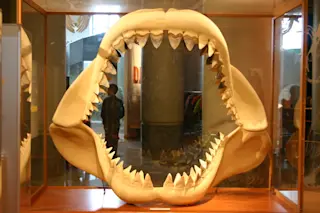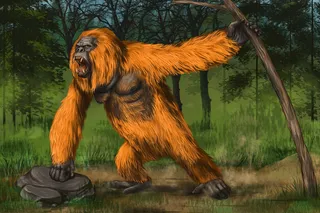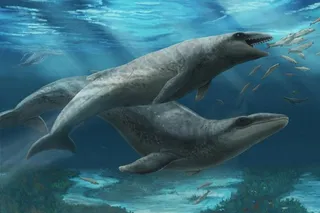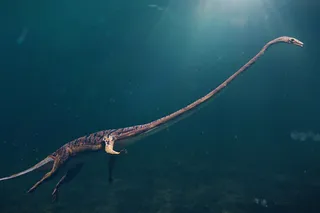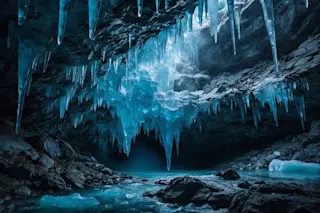When you hear “megalodon,” what comes to mind? If the answer is a gigantic version of a great white shark, the latest revelation in megalodon research might make you reconsider. A recent find by researchers dashes this common perception of the extinct species and grants it a reimagined shape, describing it as more slender than the great white shark.
What Shark Is Similar to the Megalodon?
The modern great white shark has often been referenced when replicating the body of the megalodon (Otodus megalodon), which lived 15 million years to 3.6 million years ago.
Originally, scientists thought the two species were closely related because of similarities in their teeth. They first placed the megalodon in the same family as the great white, Lamnidae. Closer examination, though, revealed that megalodon teeth actually had slight differences in serration and shape, and so it was reclassified into the extinct family Otodontidae.
A new study published in Palaeontologia Electronica has now sculpted a revised vision for the megalodon’sbody, dissolving the idea that it was simply a larger version of a great white shark.
“The remarkably simple evidence that O. megalodon had a more slender body than the great white shark was hidden in plain sight,” said DePaul University paleobiology professor and senior author Kenshu Shimada, in a press release.
Read More: What Is a Megalodon? Facts About One of the Biggest Sharks in History
A Consequential Catch
The study arose from a disparity between reported lengths of O. megalodon vertebrae fossils. An incomplete set of vertebrae from one megalodon specimen was reported to be a total of 11.1 meters in length. However, the same fossil specimen was estimated to be only 9.2 meters in length according to yet another previous study, deduced from the relationship between the diameters of the largest vertebrae and body lengths measured from multiplied modern great white sharks.
“It was a ‘eureka-moment’ when our research team realized the discrepancy between the two previously published lengths for the same Megalodon specimen,” Shimada said in the press release.
Even though this realization has finally confirmed a distinct build for the megalodon, it will take further research to fully map the shark’s body.
“Moving forward, any meaningful discussion about the body form of O. megalodon would require the discovery of at least one complete, or nearly complete, skeleton of the species in the fossil record,” said Jake Wood, a master’s student of Shimada, in a press release.
“Despite the major scientific advancement in our new study, the fact that we still don’t know exactly how O. megalodon looked keeps our imagination going,” Shimada said. “The continued mystery like this makes paleontology, the study of prehistoric life, a fascinating and exciting scientific field.”
Read More: The Mystery of the Megalodon and What Scientists Know
What Was the Megalodon Like?
Previous studies estimated the megalodon to reach lengths of 50 to 65 feet (15 to 20 meters). The bulk of evidence associated with the shark and its assumed size consists of fossilized teeth and vertebrae. Finding entire shark skeletons is so rare because they are largely made of cartilage, not bone. As a result, the remains of dead sharks decompose in most cases, with teeth as an exception.
Although it seems unlikely that the megalodon would face defeat, it met an unexpected end due to global cooling during the Pliocene around 3 million years ago and greater competition from great white sharks. Climate change likely caused a loss of habitat and shook up the food chain, leading to extinction for the megalodon.
Most people are probably grateful that the megalodon now only swims on movie screens and not in real life, but it might finally be time to amend our idea of what the bygone predator truly looked like.
Read More: The Massive Megalodon Shark Was No Cold-Blood Killer
Article Sources
Our writers at Discovermagazine.com use peer-reviewed studies and high quality sources for our articles, and our editors review for accuracy, and trustworthiness. Review the sources used below for this article:
Palaeontologia Electronica. White shark comparison reveals a slender body for the extinct megatooth shark, Otodus megalodon (Lamniformes: Otodontidae).
Britannica. Megalodon.
University of Bristol. A shark nerd’s guide to Megalodon: What do we know about this extinct giant shark?
American Museum of Natural History. Why Are Fossil Shark Skeletons So Rare?
Natural History Museum. Great white sharks could have contributed to megalodon extinction.
Read More: 6 Ancient Mega-Predators that Once Ruled the World



